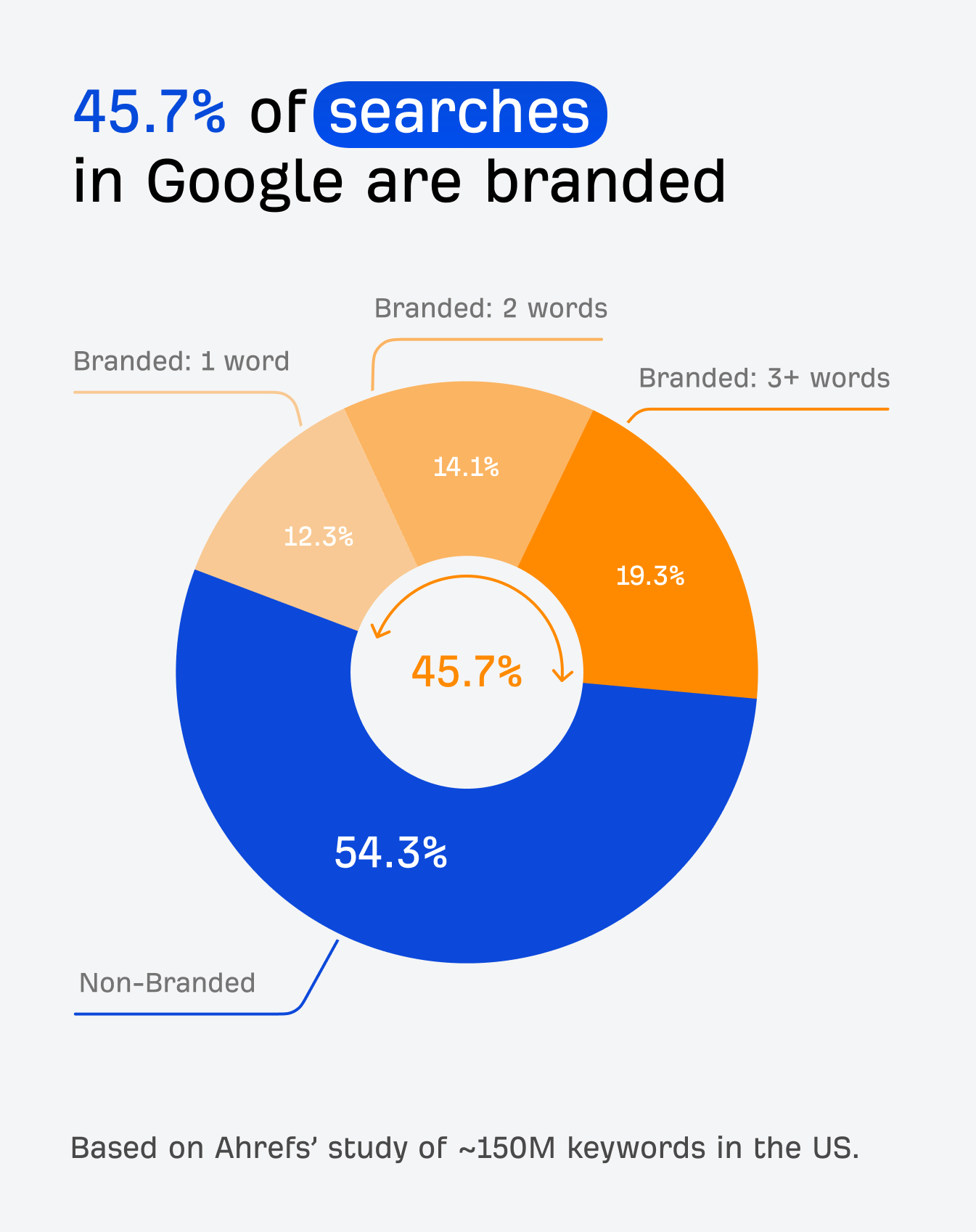Is Web Publishing Dead in the Age of AI, What To Write Instead & How 46% of Web Searches are Branded
SEO TL;DR #73 02/06/2025
It’s been over two weeks since AI Mode launched in the US, and we’ve had mixed feelings, with one survey revealing how 45% of people are “scared out of their mind” about Google AI replacing search, while another says SEOs are ready for the change.
We’ve had a wave of content on the future for SEO, including why Google’s CEO doesn’t think web publishing is dead, so let’s dig in.
SEO X AI
Google Says Web Publishing Isn’t Dead (The Current Reality Is Different)
In an interview by Niley Patel from The Verge, Sundar Pichai insisted that web publishing is alive and well, even growing, despite AI Overviews pulling attention away from source sites.
Patel quoted the News Media Alliance, who called AI content theft, accusing Google of stripping links, lifting content and giving publishers nothing in return.
Pichai pushed back on the idea that Google's AI Mode is killing web publishing, claiming the opposite: AI Mode will still send traffic, potentially more and better traffic, to a broader set of sources than before.
It’s clear Google still wants to position itself as the good guy, championing the open web while reshaping how people interact with it. Sundar framed AI Overviews as context, not replacement. But if you’re a publisher losing visibility, that reassurance might feel a bit hollow.
We know that click-through rates to sites when there is an AI overview has tanked, and as AI Mode becomes the new normal, we have to ask what kind of traffic is left and who can still earn it?
Content SEO
Informational Content Isn’t Dead - It Needs a Wake-up Call
The question on what’s left for humans to write about leads me nicely to an article by Chima Mmeje which asks: should we stop creating informational content?
There’s been quite the reckoning with content lately, fuelled by AI Overviews, plummeting click-throughs and a gnawing feeling that maybe all those 1,000-blog-post content moats weren’t for the user after all.
Chima reveals how we told the story that it was all for top-of-funnel visibility, but in truth, it was for rankings. But now that Google’s AI can summarise all that content into a neat answer box, why would anyone click?
💡Takeaway: The fix isn’t to abandon informational content. It’s to reconnect it to a purpose: product adoption, user trust and brand affinity. Informational pages should now convert, support onboarding or deepen the relationship. Think fewer keyword clusters, more valuable resources. Fewer "what is" pages, more "here’s how we help."
Chima summarises that the old metric was traffic, but the new metric is impact. And if your content doesn’t stick, doesn’t help or doesn’t drive action, it’s just more fodder for the AI machine
SEO X AI
Understanding How AI Mode Works and What Comes After
If you want to know how Google’s new paradigm functions, from query fan-out to user embeddings, this article by Mike King is the most detailed, technical and grounded piece I’ve read.
Mike maps out the entire pipeline: how prompts are expanded into synthetic queries, how passages are retrieved and re-ranked, how LLMs construct answers, and how your content either makes it into the mix… or doesn’t.
🔎 How SEO can prepare for the future of search
Content SEO
Your Best Chances of Ranking: Build a Brand
I’ve talked a lot recently about how brand trust matters more than positions, and this study from Ahrefs shows that nearly 46% of all Google searches are branded. That means almost half of searchers already know exactly what (or who) they’re looking for.
A branded search in this case was anything that included a product name or trademarked term, for example
1-word branded queries: “youtube”, “amazon”, “facebook”.
2-word branded queries: “google translate”, “bank of america”.
3+ word branded queries: “inside out 2 showtimes”, “iphone 15 pro max”.
💡 Takeaway: If your SEO strategy is built entirely around winning non-branded, top-of-the-funnel keywords, you’re only fighting half the battle.
Strong brands create their own demand. People search for names they trust, not just by need, which has a knock-on effect - branded search volume makes you more likely to win the generic terms.
Take something like Money Saving Expert here in the UK, outranking all of the major banks for “mortgage calculator”.
So what should you be doing?
Track branded vs non-branded traffic separately. The easiest way to do this is to pull in Search Console data into Looker Studio and apply filters to exclude the variations of your brand name.
Audit your branded SERPs. Are your help docs, review pages, changelogs and location listings showing up, or is Google filling the gaps for you with other people's content?
Start building a brand moat because that's what moves the needle in SEO in the long term.
Technical SEO
Is it Time to Ditch the Old SEO Dashboard?
Clicks, rankings and bounce rates won’t cut it much longer. As AI systems become the new middleman between content and users, we need a new set of KPIs that reflect how LLMs retrieve and cite content.
A brilliant write-up by
, breaks down 12 emerging metrics for AI-era visibility, such as Chunk Retrieval Frequency and Embedding Relevance Score.You won’t find these metrics in GA4, but if you’re still reporting on CTR while Gemini, ChatGPT, and Perplexity are doing the searching, your dashboard will be outdated. Worth a read if you're serious about future-proofing your SEO strategy.
PS: If you want to talk about your next project, use the link below to book a 20-minute discovery call:





